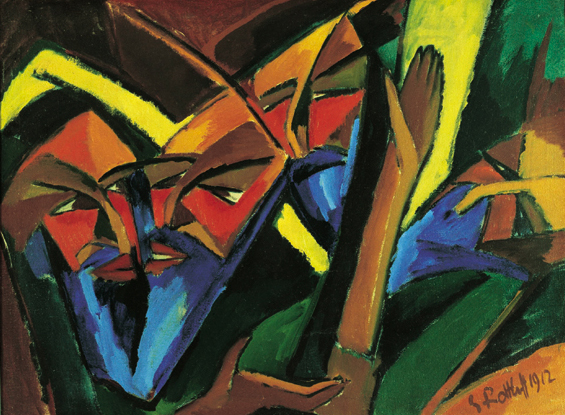Image Details

Copyright 1995 The Museum of Modern Art, New York
“Woe unto you” are the words Jesus uses in Matthew 23 to curse the scribes and Pharisees; the latter are depicted above in a 1912 oil painting by the German expressionist Karl Schmidt-Rottluff (1884–1976). Although the author of Matthew grossly caricatures actual, first-century Jewish scribes and Pharisees in accusing them of various evils, his polemic has had its effect—“Pharisee,” today, is almost a synonym for “hypocrisy.”
In fact, after the destruction of the Temple in 70 C.E., and before rabbinic writings consolidated Jewish practices (beginning with the composition of the Mishnah in about 200 C.E.), a number of groups sought positions of leadership within the Jewish community. Among the most prominent were priests, members of the Herodian family and Pharisees. The author of the Gospel of Matthew, according to Anthony Saldarini, represented another rival group—one that sought to establish Jesus’ way of life as the authentic expression of essentially Jewish traditions. Matthew’s gospel, then, is in part a highly rhetorical, highly partisan attack on the author’s political competition—not a rejection of Jews or Jewish traditions per se.
